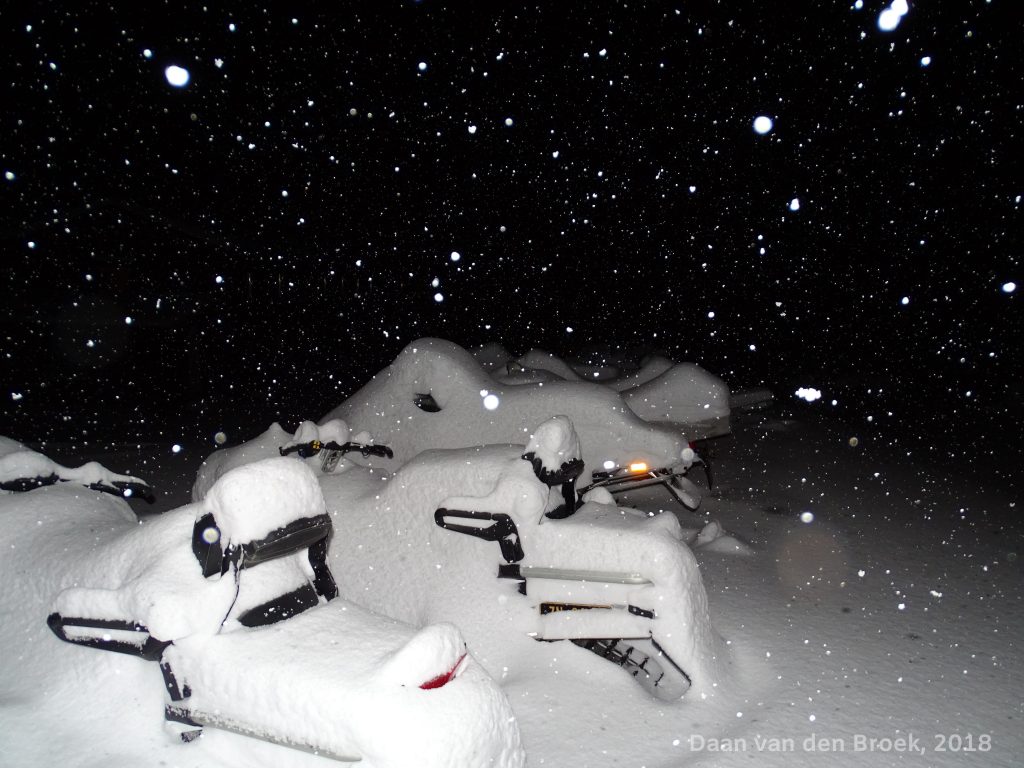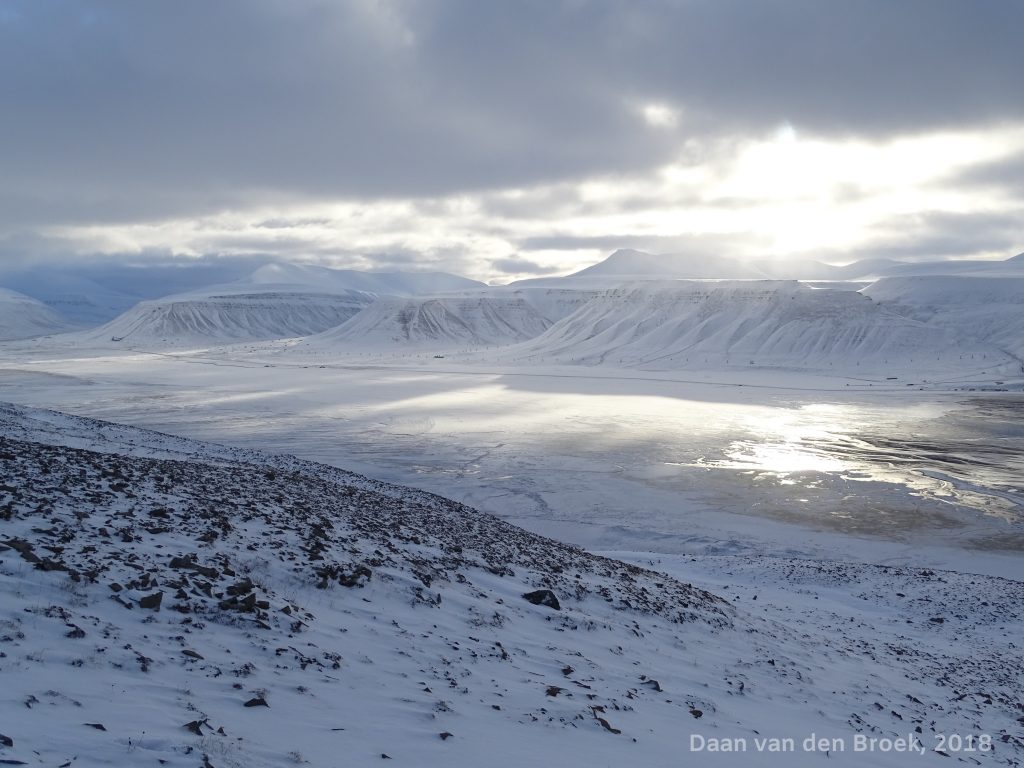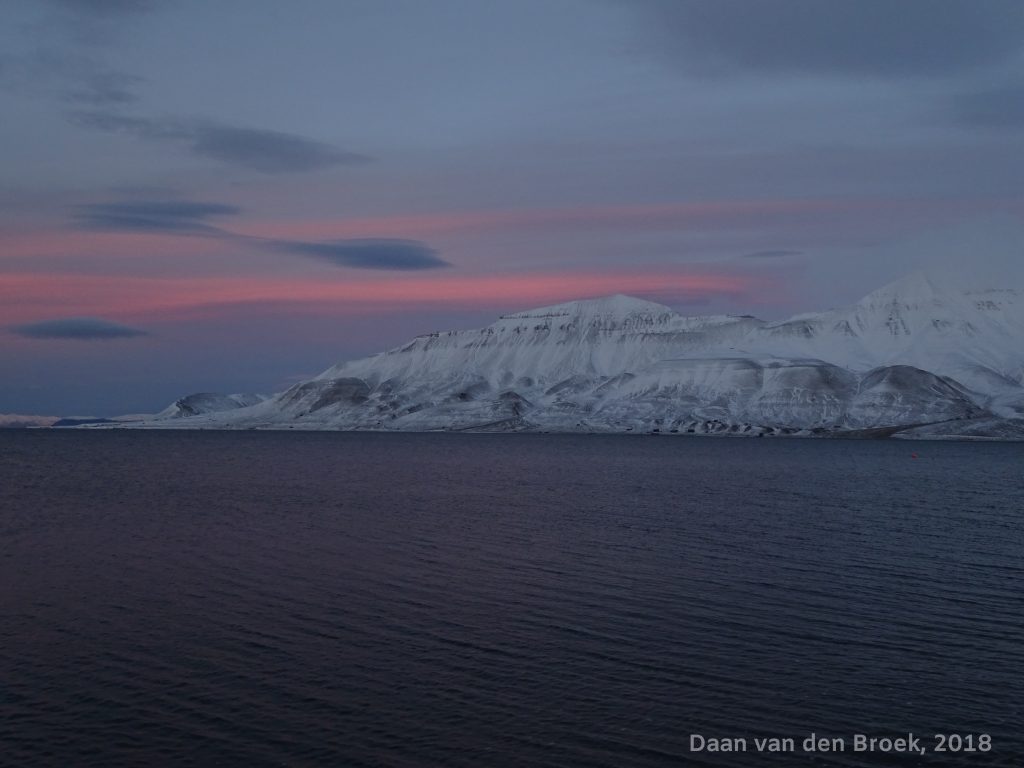From August 2018 to December 2018, I studied at UNIS, the University Centre in Svalbard, where I went on an exchange to do a minor in Polar Meteorology, Climatology and Oceanography. This is the second out of two blogs where I share my experiences from my time in Longyearbyen.
Read here why I decided to study in Svalbard and the process of getting there and read the first part about my experiences of studying at UNIS in Svalbard here. In the first part I discussed my first impressions of Longyearbyen and the university, the hikes we did, the scientific cruise we went on for the course Polar Ocean Climate and a visit to the Russian ghost town Pyramiden.
Field work at the remote Isfjord Radio Station
The day my dad and his partner – who came to visit me on Svalbard – left, my fellow students and I went on field work to Kapp Linné. Since Isfjord Radio is completely isolated from the rest of the world (and Svalbard does not have roads besides the streets in Longyearbyen and Barentsburg), we went there by boat. Not only was the fieldwork fun and interesting to do, the location was even more remarkable. The radiostation, consisting out of a few buildings, was located in the middle of the Arctic wilderness. The coast and some mountains in the background on one side, and a big plain with some small lakes, transiting into a large mountain ridge, on the other side. While going outside or doing field work, there always needed to be a polar bear guard present, due to the relatively high risk of encountering a bear. Earlier that year, in summer, Isfjord Radio even got a visit from a polar bear!
While the nights were steadily getting darker, the temperature started dropping below freezing levels every now and then. The first day we set up our weather stations and other weather related measurement equipment. In the following days, we read the data and did manual measurements such as releasing an ankered weather balloon (radiosounding).
One of the weather stations we set up, was located several kilometres away, behind a mountain ridge. One of the last days of the field work, we came back to retain the data and dismantle the weather station. To our surprise, we found that our rain gauge was destroyed. This most likely was done by a polar bear, as we also saw something that looked suspiciously much like a footprint of a polar bear. Immediately, two polar bear guards were assigned to make sure that we would avoid a confrontation, in case the bear was still near. Luckily, the bear wasn’t anywhere near the field site anymore.
Besides the field work and studying, there was also time for relaxation. The scenery was amazing, not in the last place thanks to beautiful sunsets. One of the most beautiful things was that there was a sauna with a view over the sea, exactly in the direction where the hours-long sunset took place. We made use of the freezing cold sea to cool down from the sauna. At the end, our stay at this beautiful location was extended with a few days due to a storm. The waves were so high that we could not be picked up by boat by UNIS’ logistics department. The violent storm was another exciting experience.
Winter!
At the end of September, just after we came back from the fieldwork Kapp Linné, the winter seized Svalbard. The first ‘serious’ amounts of snow fell and the temperature dropped to a minimum of about -5 degrees Celsius. In the weekend of the 29th of September, we hiked towards and up to Hiorthfjellet, the big mountain opposite of Longyearbyen. With the sun coming through and shining on the snow covered mountains, the views could not have been more beautiful than they were.
Heading into the polar night
As October progressed, the amount of daylight shortened very rapidly. The daylength decreased 15-30 minutes per day – quite a difference compared to the mid-latitudes, where the daylength changes about 2-5 minutes per day, depending on the exact latitude and time of year. As the days got shorter, the temperatures decreased and we got more and more chances to see the aurora borealis (northern lights). At the same time, the studies continued with several lectures per week and in the mean time we had to write reports on the data we gathered during the scientific cruise and the fieldwork in Kapp Linné.
In the weekends, we still used our time to experience as much of Svalbard as possible. In the beginning of October, we went on a booze cruise to Barentsburg in the evening/night. Partying and drinking on a ship in the Arctic with a temperature well below 0 and snow falling down is really something else than your average night out!
Cabin trip
During a weekend, on the 20th of October, we decided to go on a cabin trip with some housemates . We booked a cabin in Todalen, one of the valleys next to Longyearbyen. We hiked 10 kilometres into Todalen. Since it was late October, the sun was very low on the horizon and there was only 4.5 hours of daylight left. Because of this the sky had a beautiful pinkish glow all day long. We walked along a frozen river and the higher we got, the snowier the environment became. When we were at our cabin, almost at the end of the valley, everything around us was white. The surroundings looked like a camera shot from a discovery channel documentary about the North or South Pole.
We had dinner in the cabin, stayed the night and had breakfast the next morning, before hiking back to Longyearbyen. On the way back, I was talking with my roommate and good friend Marjolein. She wondered what my plans were after my bachelor’s degree and she wondered if I considered doing a master’s degree abroad. For some reason I had never really considered this, but I realised this would open a completely new window of opportunities. This conversation was a real game-changer: the same evening I began looking at master programs abroad. I am still grateful for this conversation, which was the onset of my road to doing my masters degree in Helsinki.
The last sunset of the year
In the week after our cabin trip, the sun set for the last time that year. We skipped our lecture on the 26th of October to witness the last sunrise and sunset. For this, we hiked up the 850 meter high Trollsteinen mountain, which is adjacent to the Larsbreen glacier. Between 12:01 and 13:19, the sun would peak just above the horizon, to not rise again until halfway February. It was very cloudy that day, so we were afraid we would not be able to see the sunset, but on top of the mountain we seemed to be extremely lucky. The sun could just peek through the clouds, giving us wonderful views. The air temperature on the mountain ridge was about -12°C, with wind speeds of approximately 10 m/s. This meant that the wind chill temperature was about -23°C, but the view was totally worth it. It still is one of the most memorable hikes of my life. Below you find a photo gallery and a video to give you an impression of that last sunset.
Staying the night in an ice cave and Aurora Borealis – Northern Lights!
In November, the sun didn’t rise anymore. Around noon, we would still get a glimpse of ‘daylight’, as the sky would turn blueish for a few hours – but even the period with twilight became shorter and shorter. Now the winter had Svalbard firmly in its grip and the temperatures dropped below -10°C frequently, the ice caves in the glaciers became stable and safe. Therefore, during the night from the 7th to the 8th of November, we stayed the night in one of the ice caves in Longyearbreen.
Thanks to the dark days we got more opportunities to see the northern lights – sometimes even during daytime. The most memorable auroras during this exchange period were undoubtedly the ones on the 8th of November. The first photo in the photo gallery below (where I share some photo’s of the polar night period in general) gives an impression of the auroras on the 8th of November. In my opinion, it’s the best photo I ever took myself.
Snowfall in the end of November
During the last days of November, when the end of our exchange semester was nearing, an intense snowstorm dropped around half a meter of snow in just 3 days time. The exact amounts were hard to estimate, because due to the wind the snow amounts were not equally distributed. The snow was a very nice surprise, since several decimetres of snow in such a short time is actually quite uncommon on Svalbard – precipitation amounts are generally quite low. Because of this snow, the snowmobile season could start. This was earlier than normal, since the snowmobile season generally starts around December/January. I made use of this by booking a snowmobile trip – I did not want to miss out on this opportunity now I was there anyway.

Final remarks on my study in Svalbard experience
During the end of November and beginning of December, we had some deadlines for our reports and we had presentations and exams. With those things, the studies came to an end and the exchange semester on Svalbard was over. Now the whole semester is done, I can give my final opinion on studying in Svalbard.
Studying on Svalbard is a quite relaxed experience. The workload seemed to be a little lower than for other universities where I studied, but the amount of time spent on fieldwork might make up for that (partly). The level of the courses is generally quite high, although for the meteorology course I hoped for a bit more specialisation – especially with regard to the Arctic, as it was often meteorology in a broader sense. Especially for the oceanography course I learned a lot of new things. In both courses, quite some prior knowledge is expected with regard to programming and writing reports. The fieldwork done was completely unique – there are very few locations where you can conduct fieldwork in such a setting.
The atmosphere at UNIS is very open and calm. The classes are small, which gives the chance to interact and bond with other students as well as teachers. The setting is often informal, so it is completely normal to converse with the professors – which is nice when you’re out on fieldwork for over a week. The teachers have a lot of knowledge, and the nice thing is that for the meteorology course we had quite some guest lecturers that had their specialisations within meteorology. Together with the environment and the activities outside of studying, going to Svalbard was an absolute dream coming true – an experience I will never forget.
Thoughts on exchange in general
Longyearbyen is very small and so is the society. You will get to know most of the other students that are at UNIS during the same semester, so in this sense it might also be a bit different from other exchanges. The exchange itself was a great learning experience as it was my first time at another university than the Wageningen University. This way you get familiar with another university culture and other (study) methods. Besides the studying part, it is a great way of meeting new people. I still am in contact with some very good friends from my time on Svalbard and I even met my current partner there. (This last part is actually not a too big of a surprise, considering that “25% of Erasmus students hooked up with their life partner during their studies abroad” 😉 ). Lastly and maybe most importantly, an exchange can bring you a lot of new opportunities. I highly doubt if I would have done my master’s abroad if I hadn’t gone on an exchange to Svalbard. I would highly recommend going on exchange, and especially on exchange to Svalbard.
In June 2019 I went back to Svalbard. Check out my blog post about Svalbard in summer here. Going to Svalbard yourself? Read here how to prepare for studying at UNIS.








































